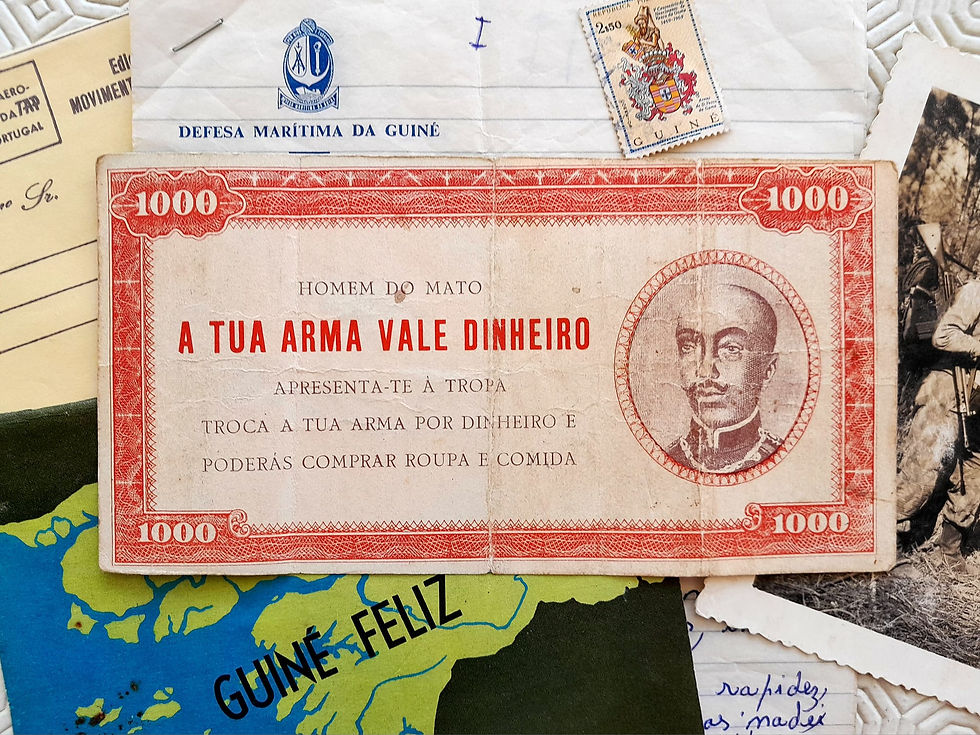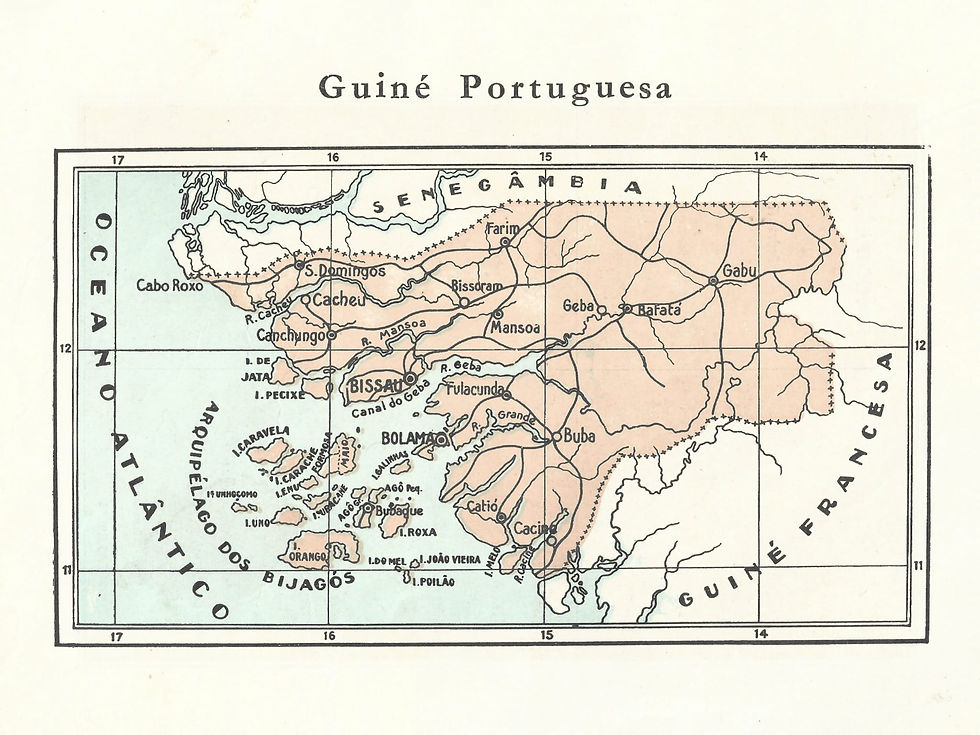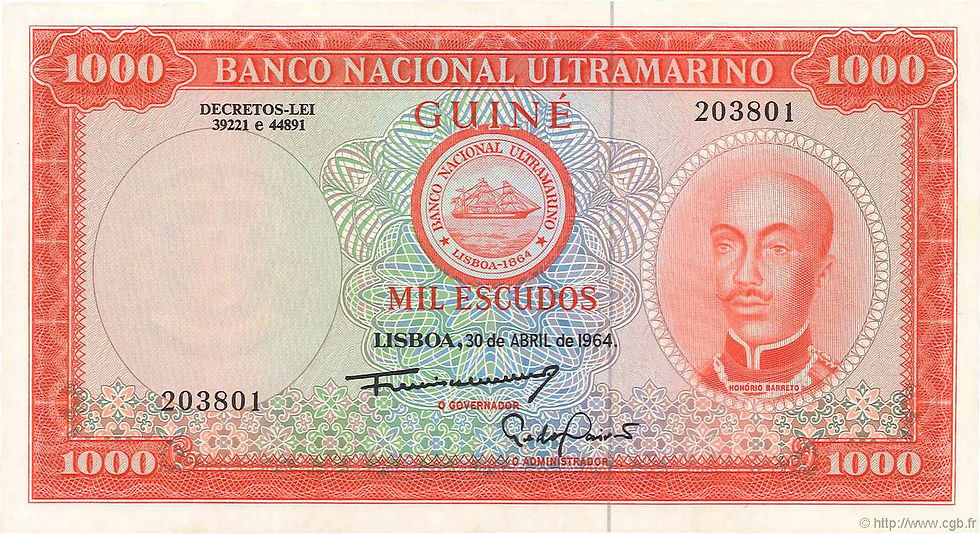Portugal - Guinea (1963/74): Propaganda note addressed to the ‘men of the bush’ during the Portuguese Colonial War
- Diniz Brites

- 23 de abr.
- 3 min de leitura

Hi everyone! In this first post, I'm going to talk to you about a document of great historical importance, whether it's because of the era in which it was made, the reason for its creation, the way in which it was used, or even its aesthetic design.
It's also important to mention that this document is part of my personal collection, having been given to me by my grandfather.
I hope you enjoy it ;)
Before going into more complex explanations, I'll tell you that this was a military propaganda used by the Portuguese Army during the Colonial War in the former territory of Portuguese Guinea (1963/74), now Guinea-Bissau.
Historical Context

These advertisements were left by the Portuguese troops in the bush, clearings, trails, "bolanhas" (vast swampy and fertile soil, generally used to grow rice) and in regions outside Portuguese control, in the hope that the PAIGC (African Party for the Independence of Guinea and Cape Verde) guerrillas, their troops and the population would surrender to the Portuguese administrative and military authorities.
This document was therefore part of the ‘psychological warfare’ practised during the Colonial War, in which the Portuguese tried to influence their ‘enemies’ by conveying the feeling that they would be well treated by the Portuguese after their surrender.
This is a very interesting document, although it reveals a certain naivety and an aesthetic of dubious effectiveness.
There is no indication of its author or origin, but one thing is certain: it was intended specifically for the Guinea theatre of operations, and today it is valuable for its iconographic and historiographical interest.
Obverse of the advert

As you may have already noticed, the front of this advert is very similar to a banknote, and was therefore inspired by the 1000 Escudos banknote of 1964, issued by the "Banco Nacional Ultramarino" (National Overseas Bank) for use in Portuguese Guinea.

The idea of being inspired by a banknote in circulation in the territory in conflict at the time makes sense, since, according to the text, the ‘men of the bush’, if they presented themselves to the Portuguese troops and gave them their weapons (by surrendering), would receive money to buy food and clothes in return.
On the right, we can see the portrait of Honório Pereira Barreto (1813-1859), governor of Bissau, Cacheu and the province of Guinea, and, in the corners, the value 1000 (escudos), linked by a frame with drawings. These are figurative elements in common with the 1000 escudos note on which it was inspired.
Translation of the propaganda text:
"Man of the bush
Your gun is worth money
Introduce yourself to the army
Exchange your gun for money and
you'll be able to buy clothes and food"
Reverse of the advert

At the top we see a hand holding a Shpagin-41 machine gun, a Soviet-made weapon fed by a 71-round drum magazine (7.62×25mm Tokarev), which, as well as being widely used during the Second World War, was also used by the PAIGC during the Colonial War. Beneath it is a hand holding various banknotes and coins.
Looking at the image and the captions, we can see that the hand holding the gun belongs to a PAIGC guerrilla, who is handing it to a Portuguese military officer in exchange for the money in his hand.
Curiosity: The Shpagin 41 machine gun became known among the Portuguese military as ‘the little sewing machine’ (a costureirinha) because the sound it produced when fired in a continuous burst resembled the noise produced by a sewing machine. It had a rate of fire of around 900 rounds per minute and was also very manoeuvrable, weighing 3.63 kg (unloaded) and 843 mm long.

Translation of the propaganda text:
"Your gun for your wellbeing
Your gun is worth money
Man of the bush
Portuguese Guinea offers you wellbeing
Present yourself to the troops or authorities
Come back, bring your gun
You'll have money to buy
Food and clothes"
Dimensions: 172 × 89 mm
Conclusion
This propaganda represents an effort made by the Portuguese, during the Colonial War, to get the PAIGC guerrillas to surrender, without the use of weapons, but only through propaganda that promised good treatment to those who surrendered. This may also show a certain desperation to maintain a ‘Colonial Empire’, although the effectiveness of these military advertisements is doubtful.
The very use of figurative elements of the most valuable escudo note at the time, and representations of an exchange of a PPSh-41 for a sum of money also reinforce the psychological effect it would have on the insurgents.